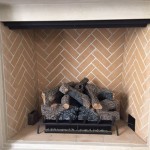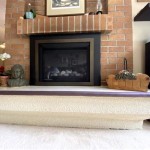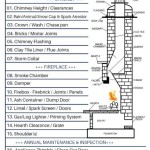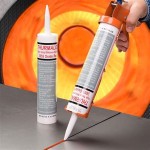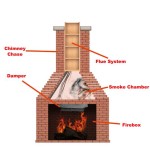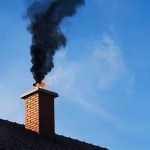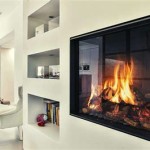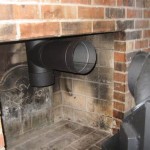Corner Direct Vent Gas Fireplaces: A Comprehensive Overview
Corner direct vent gas fireplaces offer a compelling solution for homeowners seeking the ambiance and warmth of a fire without the complexities of traditional wood-burning fireplaces. These appliances are specifically designed to fit into corners, maximizing space utilization and providing a unique focal point within a room. Their direct vent design ensures efficient and safe operation, making them an increasingly popular choice for both new construction and renovation projects.
A direct vent system is characterized by its sealed combustion chamber, which draws air from outside the home for combustion and expels exhaust gases directly back outside through a dedicated venting system. This design eliminates the need for a chimney and significantly reduces the risk of indoor air quality issues associated with traditional fireplaces, such as carbon monoxide leaks. The sealed system also contributes to improved energy efficiency by preventing the loss of heated or cooled air from the home.
Advantages of Corner Placement
The corner placement of these fireplaces presents several distinct advantages. Firstly, it allows for optimal space utilization, particularly in smaller rooms where a traditional fireplace might occupy valuable wall space. By tucking neatly into a corner, the fireplace becomes a focal point without dominating the room's layout. This configuration can also create a more intimate and cozy atmosphere, encouraging comfortable seating arrangements around the hearth.
Secondly, a corner fireplace can visually balance a room's design. In spaces that are awkwardly shaped or lack a natural focal point, a corner fireplace can serve as an anchor, drawing the eye and creating a sense of order. The angled placement can also soften sharp corners and add visual interest to an otherwise rectangular room. The design flexibility offered by corner models allows them to be integrated into various architectural styles, from modern and minimalist to traditional and rustic.
Thirdly, corner fireplaces offer unique design opportunities. The angled layout can be accentuated with custom mantels, decorative surrounds, and integrated shelving units. This allows homeowners to personalize the fireplace to match their existing décor and create a truly unique and stylish focal point. The asymmetrical nature of the design can also lend itself to creative lighting solutions, further enhancing the ambiance of the room.
Direct Vent Technology: Safety and Efficiency
The direct vent technology employed in these fireplaces is a critical feature contributing to their safety and efficiency. Unlike traditional fireplaces that rely on indoor air for combustion and vent exhaust gases up a chimney, direct vent systems utilize a sealed combustion chamber. This chamber draws air from outside the home through one vent pipe and expels exhaust gases back outside through another, concentric pipe. This process eliminates the risk of backdrafting, which can occur when a chimney fails to properly vent exhaust gases, leading to the introduction of dangerous carbon monoxide into the home.
The sealed combustion chamber also enhances energy efficiency. Because the fireplace draws air from outside, it does not consume heated or cooled air from the home, minimizing energy loss. This is particularly important in well-insulated homes, where traditional fireplaces can create a negative pressure situation, drawing cold air in through gaps and cracks. Direct vent fireplaces, on the other hand, maintain a balanced pressure, reducing drafts and improving overall energy efficiency.
Furthermore, direct vent systems offer greater installation flexibility. Because they do not require a traditional chimney, they can be vented horizontally through a wall or vertically through the roof. This allows for installation in a wider range of locations, including rooms that do not have an existing chimney. The venting system is typically made of double-walled pipe, which remains cool to the touch, further enhancing safety and allowing for closer clearances to combustible materials.
Fuel Options and Heat Output
Corner direct vent gas fireplaces typically operate on either natural gas or propane. Natural gas is generally the more economical option, provided that a gas line is readily available. Propane, on the other hand, offers greater flexibility in terms of location, as it does not require a connection to a municipal gas line. Propane tanks can be easily installed and refilled, making it a suitable option for rural areas or homes where natural gas is not available.
The heat output of these fireplaces is measured in British Thermal Units (BTUs). The appropriate BTU rating will depend on the size of the room and the desired level of warmth. Smaller fireplaces typically range from 20,000 to 30,000 BTUs, while larger models can produce up to 40,000 or more BTUs. It is important to select a fireplace with a BTU rating that is appropriate for the space to avoid overheating or wasting energy. Many models also offer adjustable flame height and heat output, allowing for greater control over the room's temperature.
In addition to providing supplemental heat, these fireplaces contribute to the ambiance of a room. The realistic flickering flames and glowing embers create a cozy and inviting atmosphere. Many models also feature realistic looking log sets, made from ceramic or refractory materials, that replicate the appearance of natural wood. Some fireplaces even offer optional features such as remote controls, thermostats, and blowers, further enhancing their convenience and functionality.
Installation Considerations
The installation of a corner direct vent gas fireplace should always be performed by a qualified professional. Proper installation is critical to ensure safe and efficient operation. The installer will need to ensure that the fireplace is properly positioned and securely mounted, and that the venting system is correctly installed and sealed. They will also need to connect the fireplace to the gas line, ensuring that all connections are leak-free and comply with local codes and regulations.
Before installation, it is important to check local building codes and regulations regarding the installation of gas fireplaces. These codes may specify requirements for venting, clearances to combustible materials, and gas line connections. It is also important to obtain any necessary permits before beginning the installation process. Failure to comply with local codes and regulations can result in fines or delays.
Clearances to combustible materials are a critical safety consideration. The fireplace manufacturer will provide specific instructions regarding the minimum clearances required around the fireplace and venting system. These clearances must be strictly adhered to in order to prevent the risk of fire. The installer will also need to ensure that the flooring and wall coverings around the fireplace are non-combustible or properly protected.
The venting system must be properly sized and installed to ensure proper venting of exhaust gases. The length and configuration of the venting system will depend on the specific fireplace model and the location of the termination point. The venting system must be installed according to the manufacturer's instructions to prevent backdrafting and ensure safe operation. Regular inspection and maintenance of the venting system is also essential to prevent blockages and ensure proper venting.
Finally, proper ventilation of the room is important to ensure a safe and comfortable environment. While direct vent fireplaces are designed to be sealed from the indoor air, it is still important to provide adequate ventilation to prevent the build-up of moisture and other pollutants. This can be achieved through natural ventilation, such as opening windows, or through mechanical ventilation, such as a range hood or whole-house ventilation system.

Vantage Hearth Direct Vent Gas Corner Fireplace
Corner Two Sided Gas Fireplace Heat Glo

Corner Ventless Gas Fireplace Visualhunt

Napoleon Ascent 36 Direct Vent Gas Fireplace Model B36

Majestic Direct Vent Gas Fireplace Corner

Corner Series Direct Vent Gas Fireplace By Majestic S Fireplaces

Majestic Quartz Direct Vent Gas Fireplace 42 Corner

Lx2 3 Sided Corner Gas Fireplace Natural The Center

Direct Vent Corner Gas Fireplace Living Room

Vantage Hearth B Vent Gas Corner Fireplace
Related Posts

